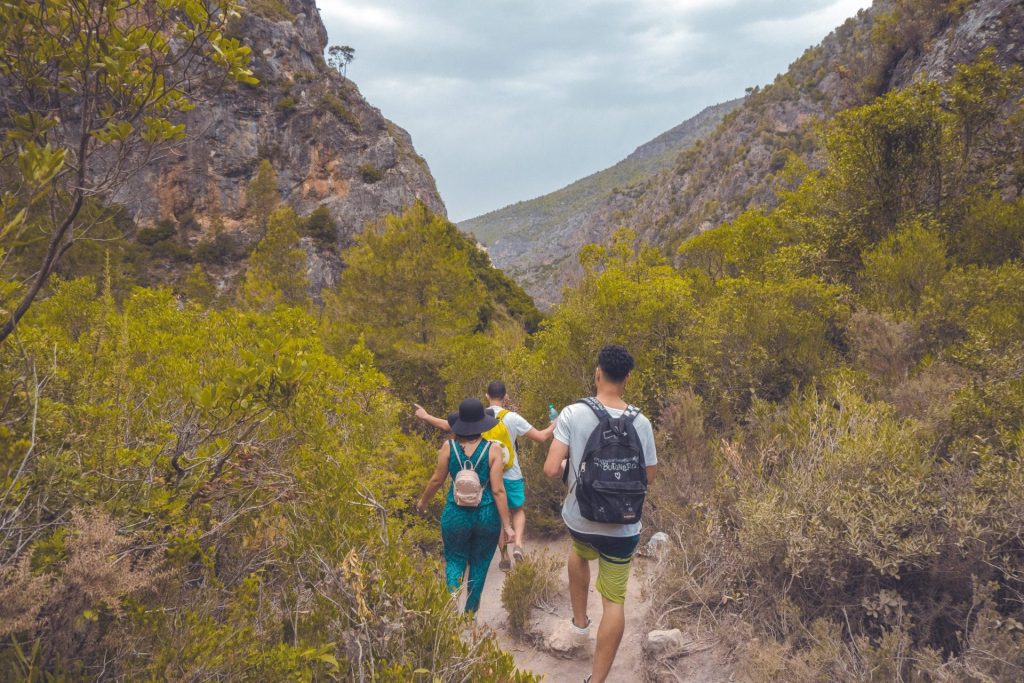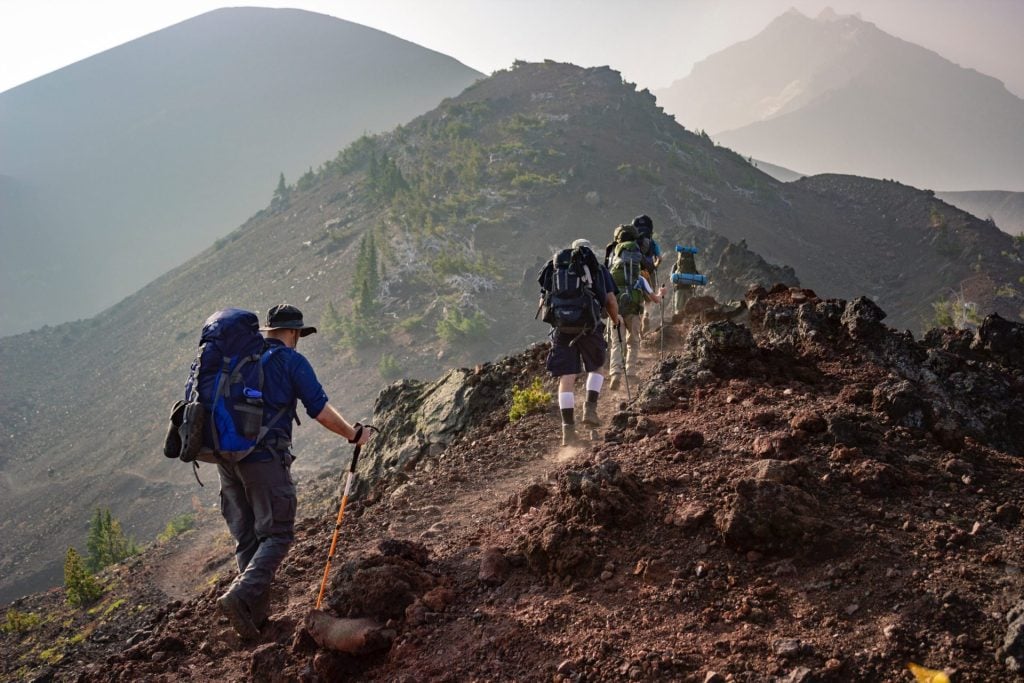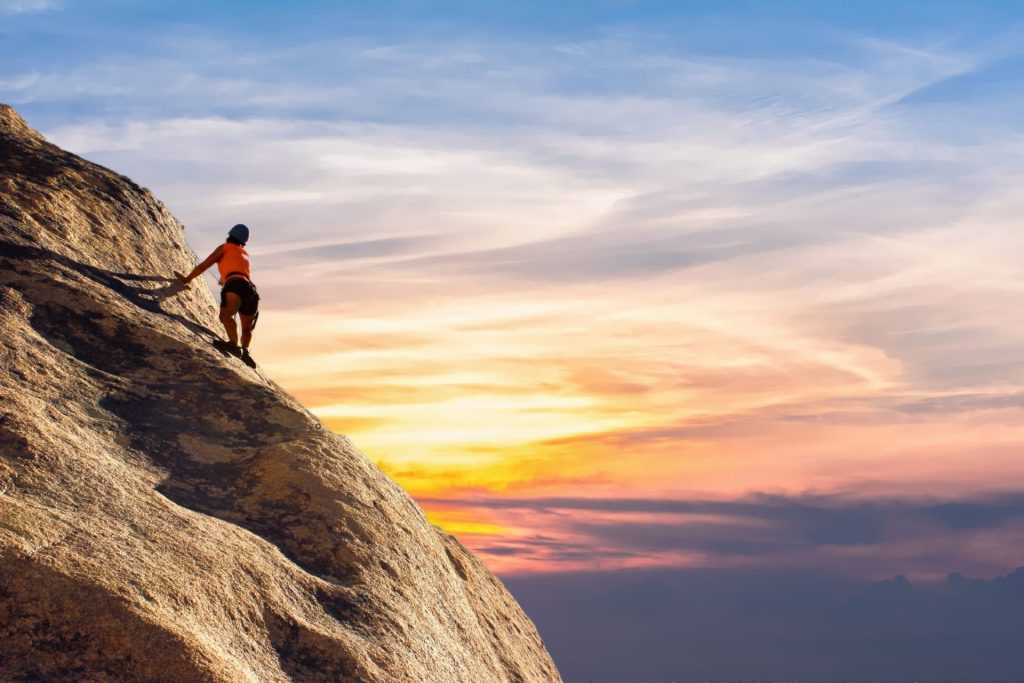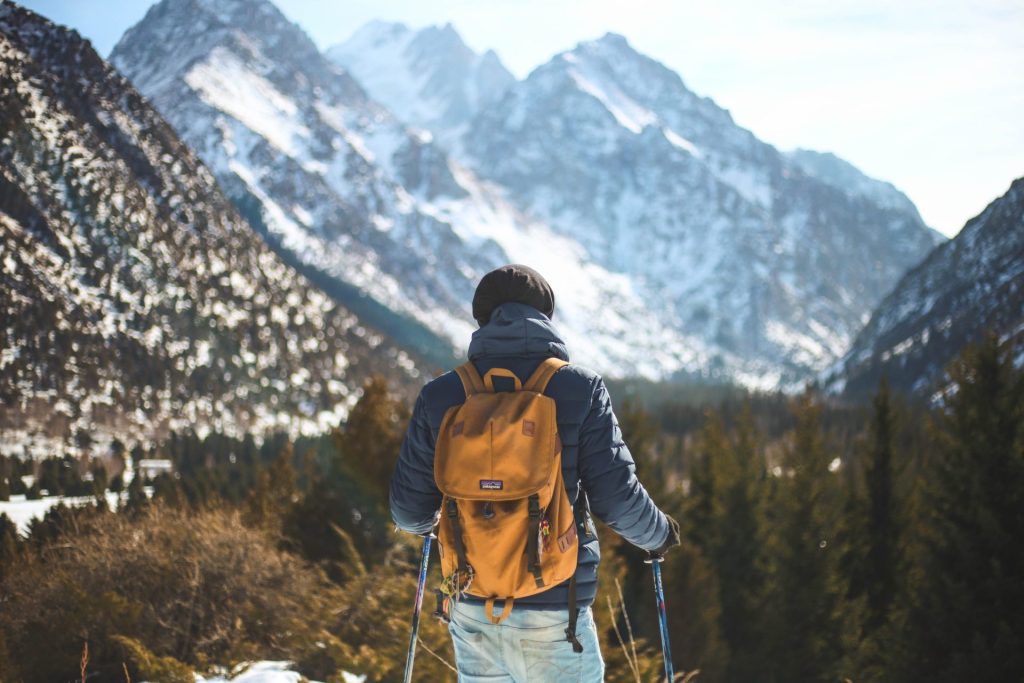BLOGS
The Science of Luxury Sporting: Mountaineering
“Mountain climbing can provide a range of benefits, both physical and mental, that can enhance a person’s overall well-being.”
Are you tired of doing the “eating, sleeping, repeat?”2cvxd
Do you want a sport that will enhance your endurance and physical strength? Or a sport that will also help you to be more positive? If yes, then Brittany introduces you to the science of luxury sporting that can do both— Mountaineering!
Although mountaineering is a challenging activity in which you will need a lot of courage in doing this sport, it’s an amazing experience once you already conquer the summit.
We will help you with the things you need to know before you feel the success of being at the top of the mountain.
What is mountaineering? — Its origin and history
Also called alpinism, mountaineering is a sport that involves attaining or making an effort to reach high points in mountainous terrain, primarily for the pleasure of the ascent.
Furthermore, “What is mountaineering?” Mountaineering isn’t as simple outdoor activity as someone might think. Mountaineering can be a dangerous sport for the inexperienced. Mountaineering is a team sport in which everyone contributes to and benefits from the achievement of the group on all levels. Most climbers find that the delights of mountaineering come from more than just reaching the summit; they also come from the sense of physical and spiritual achievement they feel after putting in a lot of personal work, becoming more and more skilled, and on the move to experiencing the beauty of the world.
As time passed by, mountaineering became a complete passion to the multitudes and people have enjoyed climbing mountains as recreation since 1336. It is thought that Sir Alfred Wills’ ascent of the Swiss Wetterhorn in 1865 marked the start of mountaineering as a sport.

Base jumping and cliff diving may be thrilling the first few times, but the activity is the same each time. In contrast to many other intensive activities, mountain climbing is particularly well adapted to be a lifetime hobby rather than a one-time event. On the other side, climbing new mountains offers a distinctive thrill with each, not to mention the sense of achievement that comes with doing so.
Besides climbing mountains because of athletic reasons, do you know that many people also do mountain climbing for the sake of studies? Few attempts to reach mountain summits for achievement existed before the modern age. The researchers of the day, the natural philosophers, began taking scientific field investigations into Europe’s Alps in the 18th century. The region around Chamonix, France, became quite popular with these explorers as a result of the enormous glaciers on the Mont-Blanc chain.
The next topic will be the types of mountaineering that you need to know…
Types of mountaineering
Many people might misunderstand that climbing a mountain looks like climbing Mt. Everest, yet it’s not true. Let’s alter your notion about mountain climbing and know the types of mountaineering:
-
High altitude mountaineering
It describes mountaineering at elevations of more than 5,000 meters. When engaging in this type of mountaineering, mountaineers will face challenges from the weather, accessibility, elevation, and continual climbing on snow and ice. For climbers to reach the high-altitude summit of the mountain they need to have enough patience, courage, commitment, caution, and diligent planning.
Historically, this kind of mountaineering has called for the use of expedition or “siege” style tactics to move huge quantities of bivouac supplies and food, as well as to set up camps at various altitudes along the ascent to let party members become used to the changes in altitude.
-
Alpinism
This type of mountaineering is for the people who prepare and focus on low-level routes. Less than 5,000 meters above sea level should mark the routes. This is a technique for mountaineering that is used on numerous different routes all around the world.
Unlike high-altitude mountaineering, you do not need to bring enormous equipment and other things that might prevent you from climbing easily. Because the goal of alpine climbing is to move quickly by bringing only the bare necessities for bivouac and climbing safety, packing light, and adopting the attitude that moving quickly is always safe.
-
Ultra Lightweight Mountaineering
This is the type of mountaineering that is not suitable for first-timers. The climbers will be able to reach the peak quickly with the help of modern equipment that is extremely lightweight.
If you still don’t have any experience in mountaineering, it is best to choose the type of mountain climbing with low-level routes like Alpinism.
Remember, small beginnings can make you progressively reach the highest summit!
Suggested Read: What Is Mountaineering?

The Do’s and Don’ts of the mountaineering
After knowing the different types of mountaineering, it is also best for you to get out of naivety and start to know the dos and don’ts of mountaineering to prevent yourself from possible accidents.
-
The Do’s in mountaineering
- Wear Mountaineering boots!
Choose the most comfortable mountaineering boots that are perfect for your chosen type of mountaineering. Take good care of your feet if you still want to continue hiking the highest summit.
- Sharpen Your Equipment.
Intentionally check your equipment before hiking if it is sharp enough and works properly.
- Bring Water with you.
It is important to bring water with you when hiking to keep yourself energized and hydrated.
- Bring the essential kits.
Make sure the majority of your team is familiar with using a basic first aid kit, pack one, and let someone know where you’re going and how long you’ll be gone. You’ll be ready if something goes wrong.
- Research before you can plan,
You need to be prepared before heading to the mountains. You need to know where you’re going, what kind of terrain and weather you might run into, and how long you’ll be gone.
-
The Don’ts in mountaineering
- Disregarding the weather.
- Walking and running fast in a climb.
- Climbing a mountain of more than 2000ft.
Suggested Read: A beginner’s guide to bagging your first mountain summit

Consider these tactics for the mountaineering
To be able to execute the sport of mountaineering efficiently, you need to know some tactics to prevent yourself from such incidents.
There are five tactics of mountaineering listed here:
- Abseiling
An essential technical ability for mountaineering is abseiling, or descending a rock face with a rope while employing friction to safely regulate the pace of descent.
Abseiling is one of the riskiest climbing techniques because it frequently becomes ordinary to some and the risks are disregarded or ignored. You can safely descend virtually any rock face or ice fall by carefully using the proper abseiling technique.
- Snow Anchors
For the summit of snow and ice, being able to construct snow anchors is a crucial ability. Skis or an ice axe are only two examples of tools that can be used to construct snow anchors. Snow pickets, however, are the typical building material used to construct an anchor in both horizontal (also known as T-slot or Deadman) and vertical locations.
- Building Stable Anchors
Remember that this is a tactic for personal use only. Although it’s best to always consider helping a friend from a fall, it is not bad to think about your safety sometimes. In mountaineering, this is a vital skill you should master. Considerations include belay stance, belay from anchor station or harness, equalization techniques, and the use of runners, slings, or corselettes.
Having strong anchors is vital. Whenever possible, use a second anchor point as a backup. Always have tape or cord on hand to extend or build anchors.
- Balance
Balance in mountain climbing is also essential, and the climber must maintain as much of their weight over their feet while remaining as upright as the rock will allow. The sixth element of climbing, using the eyes, can be done while standing upright.
- Managing Ropes
On the snow, ice, and rock, rope handling is an equally vital art form. The rope is handled with great since it could save a life. A skilled rope handler is an important contributor to the climbing team. The necessary skills are hard to learn and must mostly be developed via experience.
Bring the essentials
You can’t go on to the summit without the essentials, that’s why Brittany provided you with a list consisting of the important equipment and tools you need:
- Harness
- An ice axe
- Compass
- Crevasse rescue equipment
- Mountaineering boots
And if you plan to feel invigorated by nature on the mountain and stay at night, consider these camping essentials:
- Tent
- Sleeping Bag
- Backpack
- Knife
- Primary materials to build a fire.
Benefits of mountaineering
There are many things to consider about mountaineering benefits. It has a mental and physical advantage for us. If you want a challenging way to lose weight and stay fit, mountaineering can be a recommended exercise for you.
Mountaineering has health advantages, but it can also help you cope at work by letting you unwind in nature. Moreover, it “calms” the brain, enhances focus and increases productivity. One of the most obvious benefits is that it enables us to increase our levels of physical and cardiovascular fitness while also reducing body fat by engaging in enjoyable and stimulating aerobic exercises.
Do you know that because of the mountaineering experiences, being optimistic, determined, and relaxed, these characters were built for the climbers? Indeed, mountaineering can help us strengthen not just our physical bodies but our mental health as well. So what now? Share a goal with climbers to conquer the summit!
Famous Mountains located in Davao City, Philippines
One of the places in the Philippines is known for its perfect mountain spots in the city of Davao!
You can spot here the beauty of the mountains like:
- The green mountain view
This is a mountain spot located to the place where you can unwind while seeing the overview of Davao.
- Tamayong prayer mountain
Also known as the Garden of Eden, Tamayong prayer mountain will bring you to a utopia and a heaven-like place where you can be at peace.
- Asbang Mountain Top
This mountain is for those who want to conquer the top of the mountain. Asbang mountain is the best place to invite your friends for an exciting mountaineering experience.
- Mt. Loay
Finding a challenge? Mt. Loay is a spot for those people who are experienced and experts in mountain climbing.
- Mt. Apo
As we all know, Mt. Apo is the tallest mountain in the Philippines, hence climbing it is one of the best achievements for adventurers. This well-known peak has previously been visited by numerous tourists, both local and foreign. Mt. Apo is well-known across the Philippines and even outside of the country.
See that Davao has a lot of places to escape. It has numerous spots to be fascinated by. Therefore, you can consider building a home that is surrounded by a calming nature plus experiencing luxury with the help of Brittany soon.

Let’s learn more about mountaineering:
-
What is the difference between mountaineering and trekking?
Trekking is thought to be about halfway between hiking and climbing in terms of difficulty. Yet, it appears that trekking is more akin to hiking. Treks are often longer and more difficult than hikes.
Trekking typically doesn’t involve as much physical or technical climbing expertise as mountaineering, which is by far the most challenging adventure sport.
On the other hand, what is mountaineering? Compared to what is needed for hiking or trekking, mountaineering is a type of sport that needs more equipment. Also, you need to be adequately trained on how to use all of the equipment.
-
Is mountaineering and hiking the same?
Hiking refers to the different forms of it such as trekking, and peak-bagging. Hiking focuses on the sport. While on the other hand, mountaineering is the art of climbing and is more challenging.
-
Is it a proper way to run when preparing for mountaineering?
Although it is an effective approach to becoming in shape for mountaineering, running shouldn’t be your sole or main form of mountain climbing. You can consider the equipment and tactics discussed above other than running.
Experience living in a luxurious place with Brittany in the South of the Philippines!
Davao city is the perfect place to establish a home for your family or yourself. You can never go wrong with the beautiful places that Davao City offers which you deserve to experience.
Brittany is now in the progress of helping you to live in Davao so you will be able to see its famous mountains and feel the tranquility that Brittany provides.
Invest in a home or real estate in Davao then experience luxury and utopia with Brittany soon.
Suggested Read: How Architecture Influencers The Value Of Your Luxury Home
Suggested Read: Top 5 Mountains For Hiking Adventures In Laguna
Suggested Read: DUCO Travel Summit In Italy: All You Need To Know
Suggested Read: Crown Jewel of the South: Best Places In Davao City
Suggested Read: Mountain Hiking Activities In Davao
















